Brendan Jon Philip – 22 June, 2017
While the divide between abstraction and representation has been broached by the simplifying forms of Pick's still lifes and interpretive approach to figure, the relationship between these pictorial modes remains tense. The abstractions are untitled, giving little clue as to their intent outside of works solely in and of themselves. While the same can be said for the muted identity of the figurative subjects, the interplay through the exhibition as a whole and as parallel maps of practice, lends a lightness to the former and a starkness to the latter.
Séraphine Pick’s first outing at Brett McDowell Gallery has the painter presenting a tight collection of figurative and abstract pieces side by side. Reduced in scale and intensity from the narrative-rich large format canvases she is noted for, Cavewomen shows a lighter touch to Pick’s practice; technically assured but with less to prove. The show has Pick moving easily between watercolour and oil to various states of resolution for her images. There is a looseness here, though a slightly tentative one, as if these works could serve as studio experiments; studies towards developing a new approach. They are held together as a coherent display by an underlying technical skill and a contextual inter-relationship that makes the exhibition a tight, if understated whole.
Each of the thirteen figurative works in the show depicts a solitary woman, named with a simple descriptive appellation: Kneeling Woman, Blue Woman, Subdued Woman and so on. Mostly loosely rendered, especially the watercolour pieces, the character and identity of these women is indistinct beyond the sometimes uncomfortable role they are playing in Pick’s images. These roles are vaguely archetypal, such as with the shamanistic Chanting Woman, the Amazon Cavewoman, or the art-history staple subject Bathing Woman. These archetypes are then draped rough across bare interior states brought to the fore.
With pieces in oil on board, such as Subdued Woman the paint is worked very materially, clinging in almost impasto clumps or pushed out in washes with rough-bristled brush strokes. The colours are drab but an energy remains in the technique, the subdued quality here more of a latency than a defeat. A similar sombre palette is maintained in Fractured Woman where angled lighting falls across a Lempicka-like figure in a Deco-esque geometric cluster. These interlocking forms of tonality draw in elements of Cubism and echo the vigilant isolation of film noir.
Isolation seems to be the key in finding identity for these women and finds an allusion in the title Cavewoman itself. The cave was once the home of pre-historic communities but is now a place of hermitage and retreat. One goes to a cave when one is exiled from the world, either in a manner that is self or circumstantially-imposed. Even in the most ‘complete’ image, Observed Woman, the subject stands alone with her facial features incomplete and domestic suggestion of her environment indistinct. The title evokes an other in the observer, the viewer of the paintings who is complicit yet separated by the wall of the picture plane. The observer is then no more or less active here than in the other works, and the woman is left again as she is.
Vignettes rather than tableaux, these single figures are unto themselves without the complexly related dramatis personae of Pick’s noted large scale allegories. Without these relationships within the field of the picture, the forced mythologising drops away into a quietness around these isolated moments of isolated figures. In their own way these works become more meaningful in the extent to which character and narrative are resisted.
The abstract works, including here two still lifes with strong inflections of modernist deconstruction of the image, seem to run through a series of approaches in search of a coherent aesthetic theme. Touches of a lyrical approach to pure abstraction can be found in the light watercolour geometries and swampy black oils picked out with spots of colour. Orphic Cubism seems to be a major touchstone here, with these works showing a great fondness for the historicity of an evocative yet formalised investigative studio practice.
While the divide between abstraction and representation has been broached by the simplifying forms of Pick’s still lifes and interpretive approach to figure, the relationship between these pictorial modes remains tense. The abstractions are untitled, giving little clue as to their intent outside of works solely in and of themselves. While the same can be said for the muted identity of the figurative subjects, the interplay through the exhibition as a whole and as parallel maps of practice, lends a lightness to the former and a starkness to the latter.
Although the diminished scale of the works here was apparently a response to injury, the work here has been an opportunity for Pick to demonstrate the strong pictorial skill-set she has built as painter, and show off the intuitive command she has of the medium. It is additionally pleasing to see McDowell expanding upon his regular roster of artists, and a return to Dunedin for this Francis Hodgkins Fellowship alumni.
Brendan Jon Philip
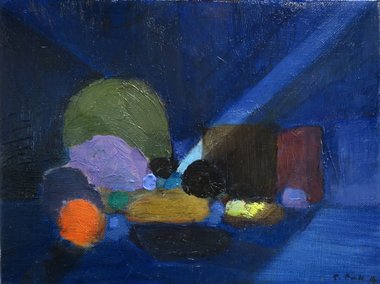

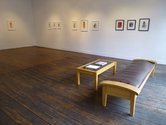

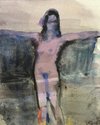


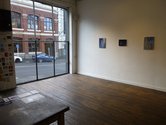



 Two Rooms presents a program of residencies and projects
Two Rooms presents a program of residencies and projects Advertising in this column
Advertising in this column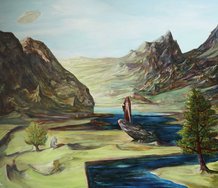
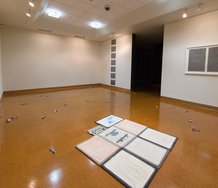
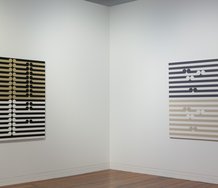
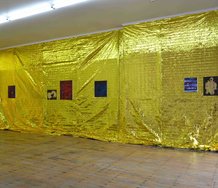
This Discussion has 0 comments.
Comment
Participate
Register to Participate.
Sign in
Sign in to an existing account.